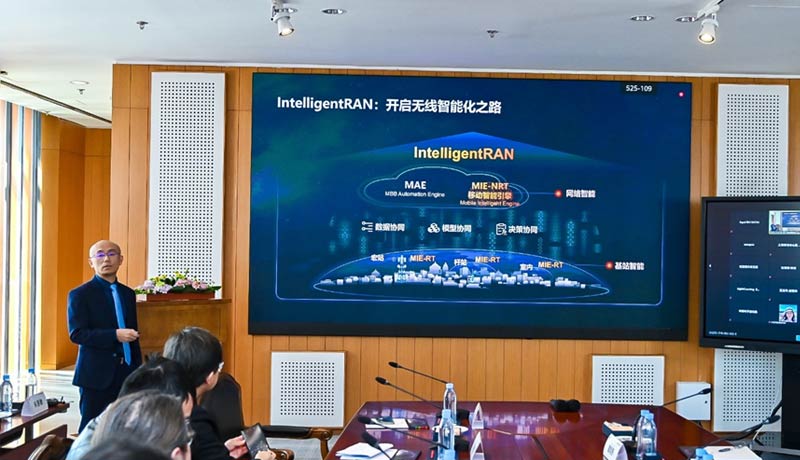
Huawei has announced IntelligentRAN, its new wireless network architecture, during the Pre-MWC Briefing and Product and Solution Launch event.
This architecture is intended to assist carriers in the development of autonomous networks through the use of service operation intelligence, experience optimization, and simpler O&M.
Gan Bin, Huawei’s Vice President and Chief Marketing Officer for Wireless Solutions, spoke at the launch and explained how key technologies were incorporated into the architecture to support ADN over wireless networks: “Intelligence improves wireless networks greatly by supporting correlative data analysis and prediction to make decisions more adaptive. This is where IntelligentRAN comes in. It will enable networks to realize zero service waiting, consistent experience, zero network faults, and optimal experience and energy efficiency. Using Mobile Intelligent Engine (MIE), it will better coordinate data, models, and decisions between base stations and networks, paving the way to wireless intelligence.”
Huawei’s new IntelligentRAN enables intelligent air interfaces to employ important technologies like as smart grids, scheduling dictionaries, and channel graphs. They may intelligently tune air interface resources using these tools to get the best user experience and capacity. IntelligentRAN additionally guides non-real-time spectrum and channel selection on the network side as well as real-time symbol scheduling and transmit power tuning on the base station side. This dramatically cuts energy usage throughout the whole network.
Furthermore, IntelligentRAN provides intelligent SLA site design, where parameters are constantly specified and models may be easily altered in response to service changes.
Networks with IntelligentRAN also benefit from intelligent O&M. They may self-learn fault characteristics to increase problem detection accuracy and root cause analysis. This substitutes passive replies with proactive maintenance, bringing wireless networks one step closer to zero-fault. Intelligent minimum drive tests (MDTs) can also be used in conjunction with Massive MIMO to provide an all-around high-precision map of network performance. This allows for more precise network design, optimization, and VIP user assurance.
IntelligentRAN employs collaborative power regulation to lower electromagnetic radiation intensity while maintaining optimal multi-band performance. This functionality will aid in meeting the power restriction rules that are currently in place in several countries.
Gan closed out his remarks by explaining how important Huawei believes this new architecture will be for sustainable development efforts: “IntelligentRAN enables autonomous networks. It will empower industries, accelerate industry transformation, and promote sustainable development of the mobile industry and a digital world. We hope to work with operators and industry partners to better fulfill this goal.”
